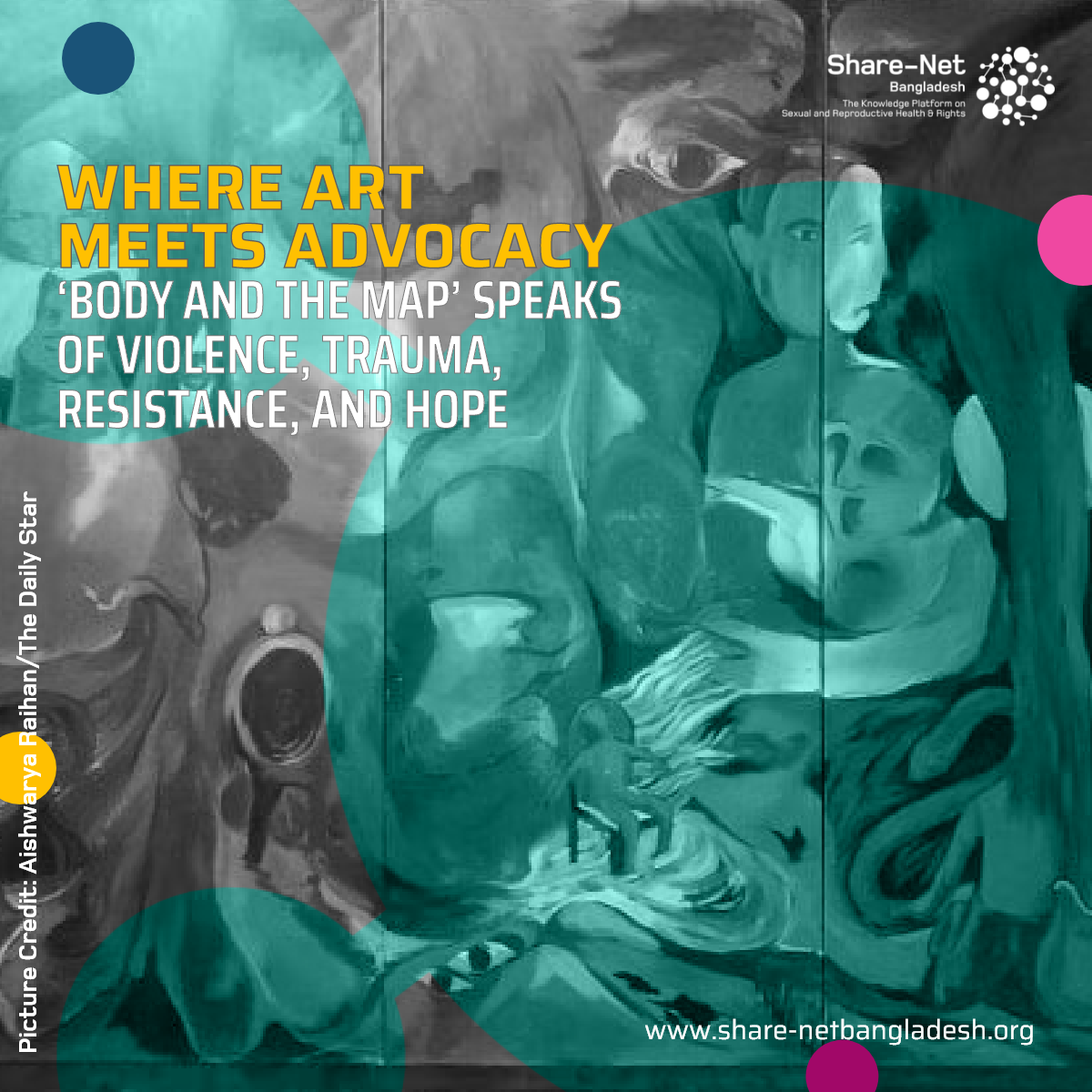Where Art Meets Advocacy: ‘Body and the Map’ Speaks of Violence, Trauma, Resistance, and Hope
“Art allows us to confront what words often fail to express,” says curator Sharmillie Rahman of Body and the Map, a thought-provoking art exhibition currently on display at Bengal Shilpalay.
Featuring works from 10 emerging local artists, this exhibition focuses on the themes of violence, societal decay, and generational trauma. It examines how our bodies bear testimony to the chaos around us, drawing attention to the societal and political instability that impacts not just individuals but entire communities. The exhibition opened on November 15 and will remain open to the public until December 28.
In today’s world, where injustice and inequality persist, Body and the Map reflects the struggles of those whose lives are shaped by conflict and inequality. Many of the themes explored in the artwork connect deeply with Sexual and Reproductive Health and Rights (SRHR), highlighting the interplay between societal structures, personal autonomy, and systemic failures.
Stories of Violence and Resistance
One of the most arresting pieces in the exhibition is Afsana Sharmin’s Ria Moni, a haunting sculpture made from children’s toys, bamboo, and broken doll parts. It memorialises a mother tragically killed during the Student Against Discrimination (SAD) Movement, leaving her infant daughter behind. This work speaks to the gendered violence that often accompanies political unrest, a critical issue in discussions surrounding SRHR.
Similarly, Farzana Ahmed’s large scrolls and sculptures delve into the horrors of hate crimes and the global injustices faced by minority communities. Her depiction of the Biswajit Das murder recalls the vulnerability of marginalised individuals, echoing the urgent need for stronger protective measures for minority groups, including those targeted for their gender or sexual orientation.
Personal Testimonies of Pain
Artists like Niazuddin Ahmmed and Mong Mong Shay use their work to highlight the psychological toll of political instability. Ahmmed’s watercolour drawings symbolise a collective loss of compassion and empathy. Shay’s Here, There, and Elsewhere series explores mental health challenges and the societal pressures that exacerbate them. These pieces resonate deeply with the SRHR movement’s focus on mental well-being as an integral part of reproductive health.
Rasel Rana’s Desire Peace installation, made from cotton and fabric, honors the martyrs of the July Uprising. His memoir fragments, displayed alongside his artwork, remind viewers of the long-term scars inflicted by violence, a reality that influences access to sexual and reproductive health services in conflict zones.
Global Connections to SRHR
The exhibition does not confine its critique to local issues. Works like Razib Datta’s satirical installation and Ashang Mong’s giant bird sculpture tie Bangladesh’s struggles to global issues like radical nationalism, economic instability, and declining mental health. These themes underscore the universal relevance of SRHR, emphasising the need for policies that prioritise health, safety, and equality amid political and economic challenges.
Ripon Saha’s work reflects a world increasingly driven by content and consumerism, raising questions about how this affects access to education, healthcare, and information related to SRHR.
Art as Advocacy
Through its powerful visuals and narratives, Body and the Map reminds viewers of the importance of addressing systemic injustices. For SRHR advocates, the exhibition offers a lens through which to explore the intersections of art, politics, and human rights.
The exhibition at Bengal Shilpalay is open to all, inviting audiences to reflect on the deep scars left by societal turmoil and the resilience of those who dare to resist it. For those invested in sexual and reproductive rights, it is an unmissable opportunity to witness how art can amplify the call for justice and equality.
Body and the Map will run until December 28, providing a space for dialogue, reflection, and advocacy through the universal language of art.
Source: The Daily Star
Picture Credit: Aishwarya Raihan/The Daily Star


